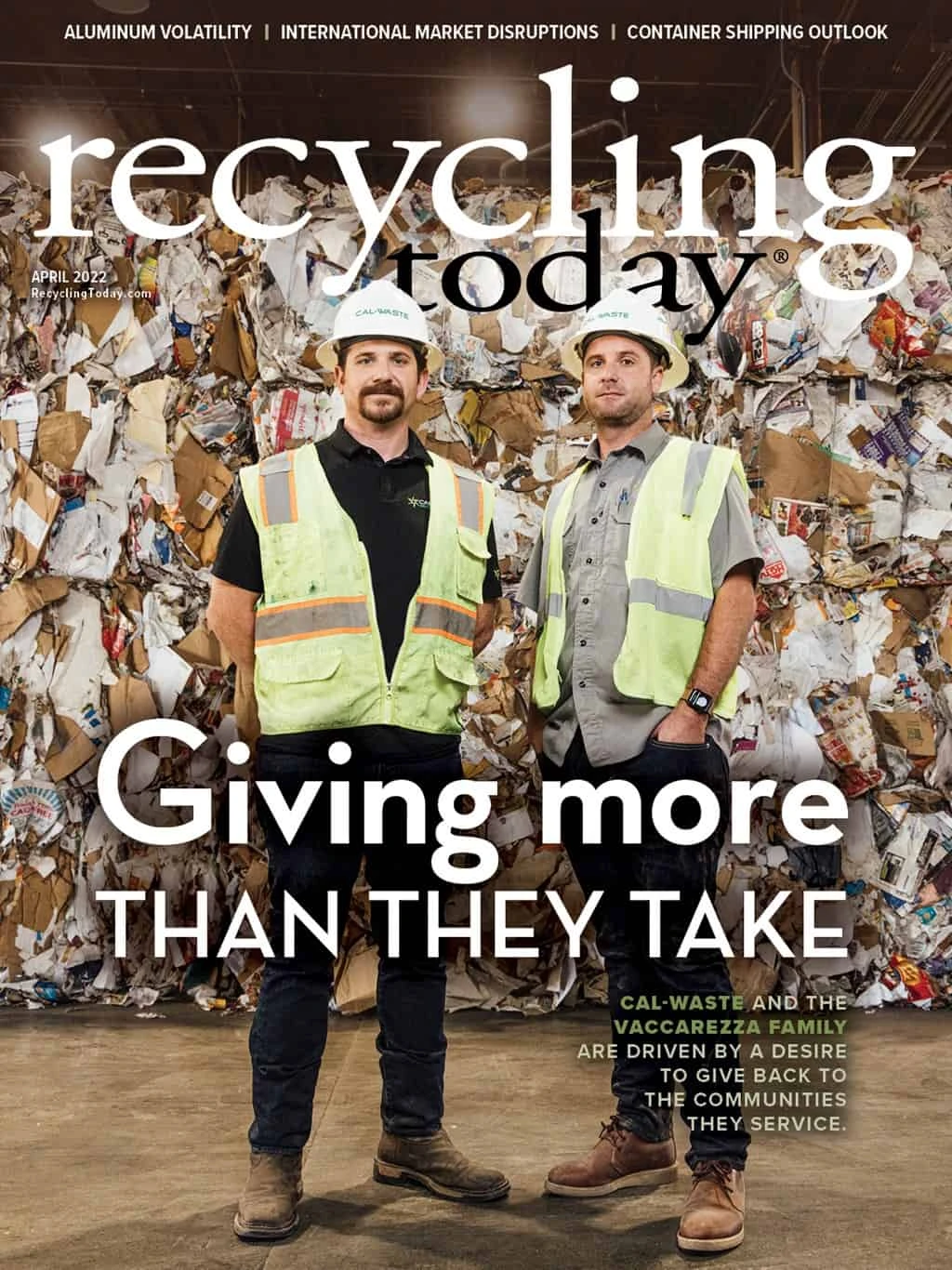Continued supply-demand imbalances are further tightening recovered paper markets as prices increased for most grades in March. Double-digit increases were seen in high-grade pricing, including a $20-per-ton bump in several regions and an increase of $25 per ton for sorted office paper (SOP) in the Southeast, according to Fastmarkets RISI’s PPI Pulp & Paper Week March 4 report.
Several sources tell Recycling Today they haven’t experienced sustained high pricing for this long. Historically, prices have spiked then eventually have fallen, but over the past several months, prices for recovered paper have remained consistently high. Despite falling a bit from previous record highs seen last year, there has been no indication that the market will see significant price drops any time soon.
“Obviously, prices have retreated from the records they set earlier around the middle of last year for both corrugated and residential mixed [but have remained consistently high],” says Chaz Miller, chair of the Northeast Recycling Council-Northeast Waste Management Officials’ Association (NERC-NEWMOA) regional recycling markets committee. “Prices always go down in winter. You’ve finished making all the boxes for holiday shopping [and] you’re not going to need to make as many boxes for January and February shopping.”
”Prices are a little softer … than they were at the end of last year when the highs were hit. But they’re stronger than they were a year ago, and I think that is a fundamental change.” — Chaz Miller, chair of the NERC-NEWMOA regional recycling markets committee
Old corrugated containers (OCC) pricing saw slight increases in the Los Angeles and San Francisco regions but otherwise held steady across much of the U.S. However, OCC prices softened a bit in the Southeast, dropping $5 per ton in part because of scheduled downtime at two large containerboard producers in that region, Miller says. International Paper and WestRock earlier this year announced maintenance downtime in the first quarter.
While recovered paper prices went down, Miller says they are still “double or more than where they were a year ago.” He adds, “I think we’re in kind of a weird new normal.
“Last year was a banner year for boxes and paper packaging,” Miller continues. “The increase in sales was extraordinary. … These are the markets we’re dealing with right now, and it’s so telling that whether it’s paper or plastic or metals, prices are a little softer … than they were at the end of last year when the highs were hit. But they’re stronger than they were a year ago, and I think that is a fundamental change.”

Port congestion also remains an issue. Miller, who is based in Maryland, says the Port of Baltimore has not seen the heavy congestion other ports have—particularly those on the West Coast—but he notes the Port of Savannah in Georgia has seen backups dating back to last year.
According to the Atlanta-Journal Constitution, trade through Savannah has increased for 18 consecutive months, with more than 30 ships waiting at anchor in the harbor at times last year. After being unloaded, the Atlanta-Journal Constitution reports that containers were stacked high in the yard for weeks, waiting to be taken away by truck or rail.
Savannah is the fourth-largest container port in the U.S. with 5.6 million containers passing through last year. In February, officials announced plans to add more than 30 percent capacity than originally planned. The Port of Savannah is on track to expand its capacity to 7.5 million shipping containers per year, with a goal to reach 9.5 million in the next three years, Griff Lynch, executive director of the Georgia Ports Authority, says.
“If you’re on the West Coast, you still have to wait. If you’re on the East Coast, you’re learning you have to wait,” Miller says.

Fuel and energy costs also are rising. AAA announced in early March that the national average gas price reached an all-time high of $4.33 per gallon. The cost of gas had been rising steadily as COVID-19 restrictions began to ease, but Russia’s invasion of Ukraine in late February has accelerated the increase.
“It’s become such a global economy, it’s hard to forecast,” a recycler based in the South says.
“Nobody’s sure about anything,” the recycler adds. “I hear the word ‘pivoting’ a lot. You can’t get some of this, how do you pivot and buy something else to replace it? Or do it yourself or get the equipment to do it? So, it’s constant evolution every day.”

Explore the April 2022 Issue
Check out more from this issue and find your next story to read.
Latest from Recycling Today
- Orion ramping up Rocky Mountain Steel rail line
- Proposed bill would provide ‘regulatory clarity’ for chemical recycling
- Alberta Ag-Plastic pilot program continues, expands with renewed funding
- ReMA urges open intra-North American scrap trade
- Axium awarded by regional organization
- Update: China to introduce steel export quotas
- Thyssenkrupp idles capacity in Europe
- Phoenix Technologies closes Ohio rPET facility





